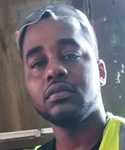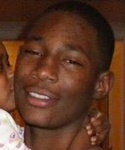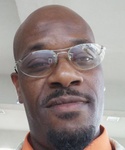
BY MICHAEL LANSU
Homicide Watch Chicago Editor
When Linda Sanders was found in her Grand Boulevard home, the 60-year-old mother was lying in a pool of blood after being “battered almost beyond recognition,” prosecutors said.
Chicago Police detectives talked to relatives, technicians collected evidence and a private body removal service — which some officers have nicknamed “the body snatcher” — took Sanders’ body to the Cook County medical examiner’s office, where a forensic pathologist would determine the cause and manner of death.
The next day, Chief Medical Examiner Dr. Stephen J. Cina determined Sanders died from “multiple blunt and sharp force injuries.” He ruled the death a homicide, and her son was charged with murder hours later.
“The police investigation focuses on if there was a crime committed, and then catching the bad guy,” Cina said. “Our investigation focuses on determining causes and manners of death. We run two independent investigations.”
While the “doctors” on the television series CSI can determine the cause of death in under an hour, Cina said the autopsy process is rarely as seen on TV, specifically noting that even the best forensic pathologists can not quickly determine the time of death.

Dr. Stephen Cina
In Cook County, the medical examiner’s office was notified of about 16,000 deaths last year alone. The team of 14 doctors, including Cina and one forensic pathologist fellow, performed 2,692 autopsies and 1,829 external examinations in 2014.
Each autopsy includes an examination of the head, removal of the organs and a toxicological analysis, Cina said. The results: 553 homicides throughout the county, including 447 in Chicago.
Following federal guidelines that can exclude police-involved killings and slayings detectives rule accidental or self-defense, Chicago Police recorded 407 murders last year.
FATAL SHOOTING
Nearly 90 percent of the Chicago homicides were caused by gun violence, according to autopsy results.
“Most of the gunshot wound cases we see either kill you by injury to the brain or internal bleeding associated with hitting vital structures in the chest,” Cina said.
About 47 percent of people shot to death were struck by more than one bullet, according to autopsy results.
“Multiple gunshot wounds [often] involve massive internal bleeding where you will have over a quart of blood in at least one of the chest cavities — and sometimes both of the chest cavities,” Cina said.
The doctors performing the autopsy must document, measure and photograph each injury, collect trace evidence and determine what bullet hit what organ, Cina said.
“With multiple gunshot wounds, it’s fairly easy to say they died of multiple gunshot wounds. … Often there are bullets retained in the body, and you have to recover them, so if [police] ever get a weapon they can do ballistic analysis and match it up to that weapon.”
On Feb. 26, Otis Harriel was charged with murder after ballistics tests determined bullets recovered from the body of Martavian Emery in April 2014 matched a gun police found on Harriel, prosecutors said.
The second most common homicide was a single gunshot to the head, which Cina said can kill a person in multiple ways.
“If it hits you in the brain, it could be immediately fatal if it hits the brain stem or an area that effects your respiration or heart, which could just shut it down,” Cina said. “It could hit non-fatal structures in the brain, but result in bleeding and swelling of the brain, which, over a matter of minutes to hours could be fatal because the brain doesn’t really have any place to expand in the skull, so when blood starts collecting in there it basically can herniate out of the base of the skull.”
According to autopsy results, nearly 8 percent of the homicides were from a gunshot wound to the chest, which Cina said can also kill a person in multiple ways.
“With a chest wound, lets say the bullet passes right through your heart and destroys your conduction system, that could kill you immediately,” Cina said. “If it grazes your heart, it could …cause cardiac tamponade, where basically the heart can’t beat because it’s encased in a sac of blood.”
NON-SHOOTING HOMICIDES
About 6 percent of last year’s homicides were the result of stab wounds, according to autopsy results.
“What you want to do with multiple stab wound cases is try to look at your ‘best’ stab wounds — the ones that look like where the knife went in and the knife went out,” Cina said. “From that, you can often reconstruct the wounds, and say if it was a single-edge blade or a double-edge blade. … You can estimate the length of the blade, and then you can tell police [the type of weapon]”
Some homicides involve a form of beating in addition to stab or gunshot wounds, and the forensic pathologist must determine if the assault directly led to the death.
“We are looking for what damage was done, what fractures were caused and … were the wounds immediately fatal,” Cina said. “Something that can be very important is determining if there are any abrasions or contusions left by the weapon that have any pattern to them.”
While gunshots, stabbings and beatings often leave obvious physical traumas, it is often subtle findings that are important when determining how young children or the elderly died.
“There are ways to kill a baby, that I don’t want to disclose, that will leave no physical marks, Cina said. “Somebody who is elderly and debilitated would be another vulnerable population because, once again, you could kill them and leave very few marks.”
One way the doctors can find these subtle abnormalities is with toxicological tests, which the medical examiner’s office does at its facility in the 2100 block of West Harrison Street on the Near West Side.
The initial toxicological test looks for common drugs like cocaine, morphine and ethanol, Cina said. If that test is negative, then a comprehensive toxicological test is done to search for other toxins.
“Poisonings could be difficult. Our toxicology screens for quite a few substances, and catches most of the things that people overdose on,” Cina said.
If doctors are still not satisfied with the results, samples can be sent to another facility that tests for less common toxins, like bath salts, Cina said.
“If you wanted to go James Bond, for example, with Ricin or Sarin there are very few places that even test for that.”
MOVING FORWARD
When he arrived in September 2012 from Florida to replace Dr. Nancy Jones, who resigned under fire in the wake of a scandal over bodies piling up in the M.E.’s office and a loss of accreditation, the county agency had six doctors.
In 2012, there were as few as two forensic pathologists on duty at any time. Now, it’s usually five. Each doctors has completed at least four years of college, four years of medical school, three years of general pathology training and a one year fellowship in pathology, Cina said.
More doctors means more autopsies. In 2012, the medical examiner’s office performed autopsies on 42 percent of the bodies it received. The autopsy rate is now up to 63 percent. By 2016, Cina is aiming for an autopsy rate of nearly 70 percent.
His reasoning: Doing more autopsies helps ensure a more accurate reckoning of the cause and manner of death — information that can help determine whether a crime was committed and, if so, help solve it.

Dr. Stephen Cina
It also can provide insights, Cina says, into problems the police and other authorities need to be aware of — say, if there was a spike in the number of deaths from overdoses of tainted heroin in one area, that would be information his office would pass along to the police.
In addition to hiring more doctors, Cina upgraded the facilities coolers and case management system so doctors can more easily work remotely.
With the new cloud-based case management system, doctors can be working remotely while waiting to be called as an expert witness at a trail, Cina said.
“They are in a lot of court since we have a lot of homicides. Not only criminal court, but also sometimes civil proceedings that follow the autopsies.”
Cina says he’s pleased with the changes and with the provisional accreditation his agency has gotten from the National Association of Medical Examiners.
“Once we fully staff out and once we integrate a few more things, we will be the best place in the country,” says Cina, a former deputy medical examiner in Broward County, Florida.
Cook County Board President Toni Preckwinkle, who pushed Cina’s predecessor out the door and has increased county funding to the agency, also says she’s happy with the results so far.
“We brought Dr. Cina to Cook County to help turn around an office that had been in crisis,” Preckwinkle says. “Thanks to his leadership and the hard work of his team, we are well on our way to making the medical examiner’s office a national model.”






